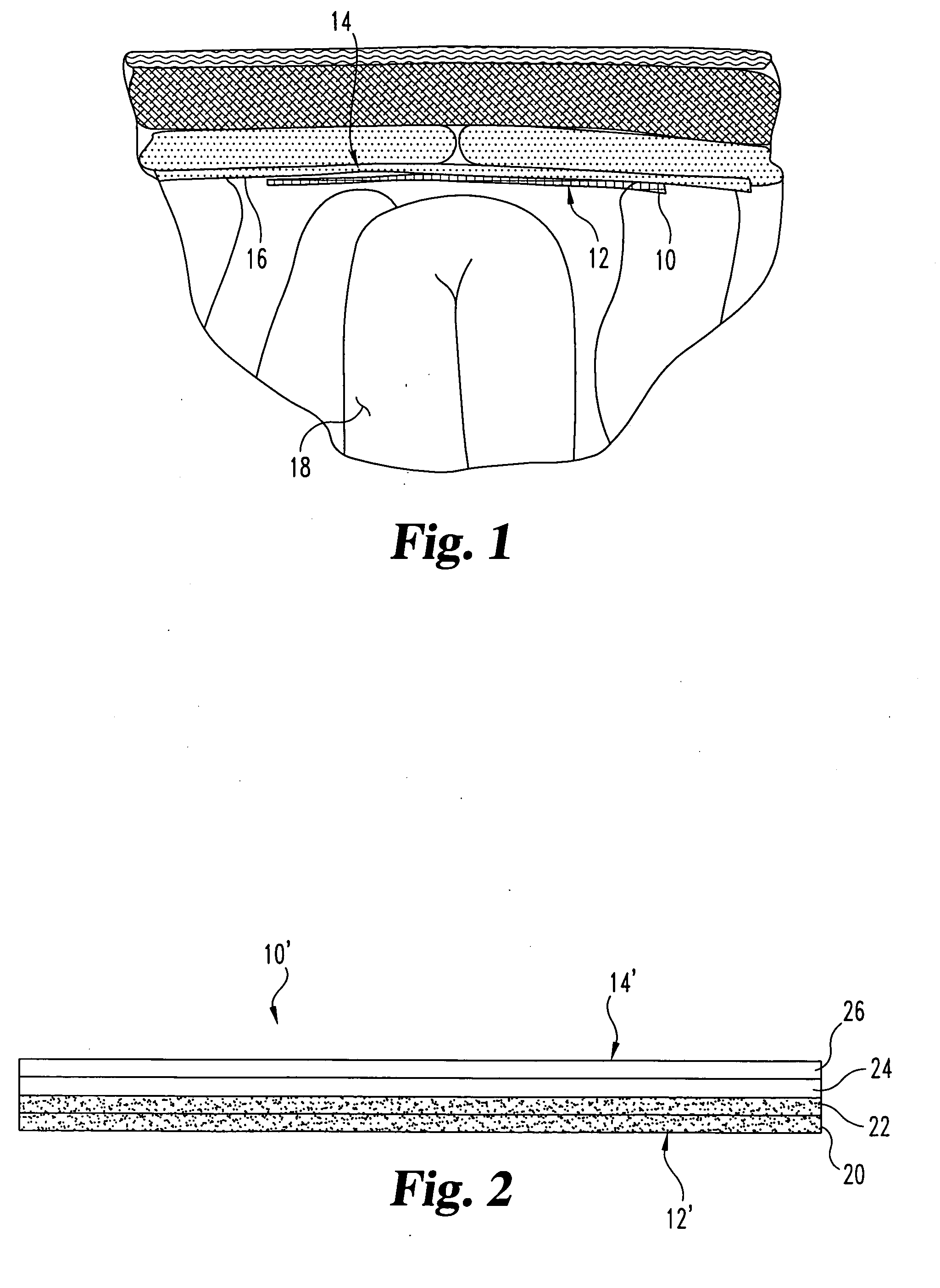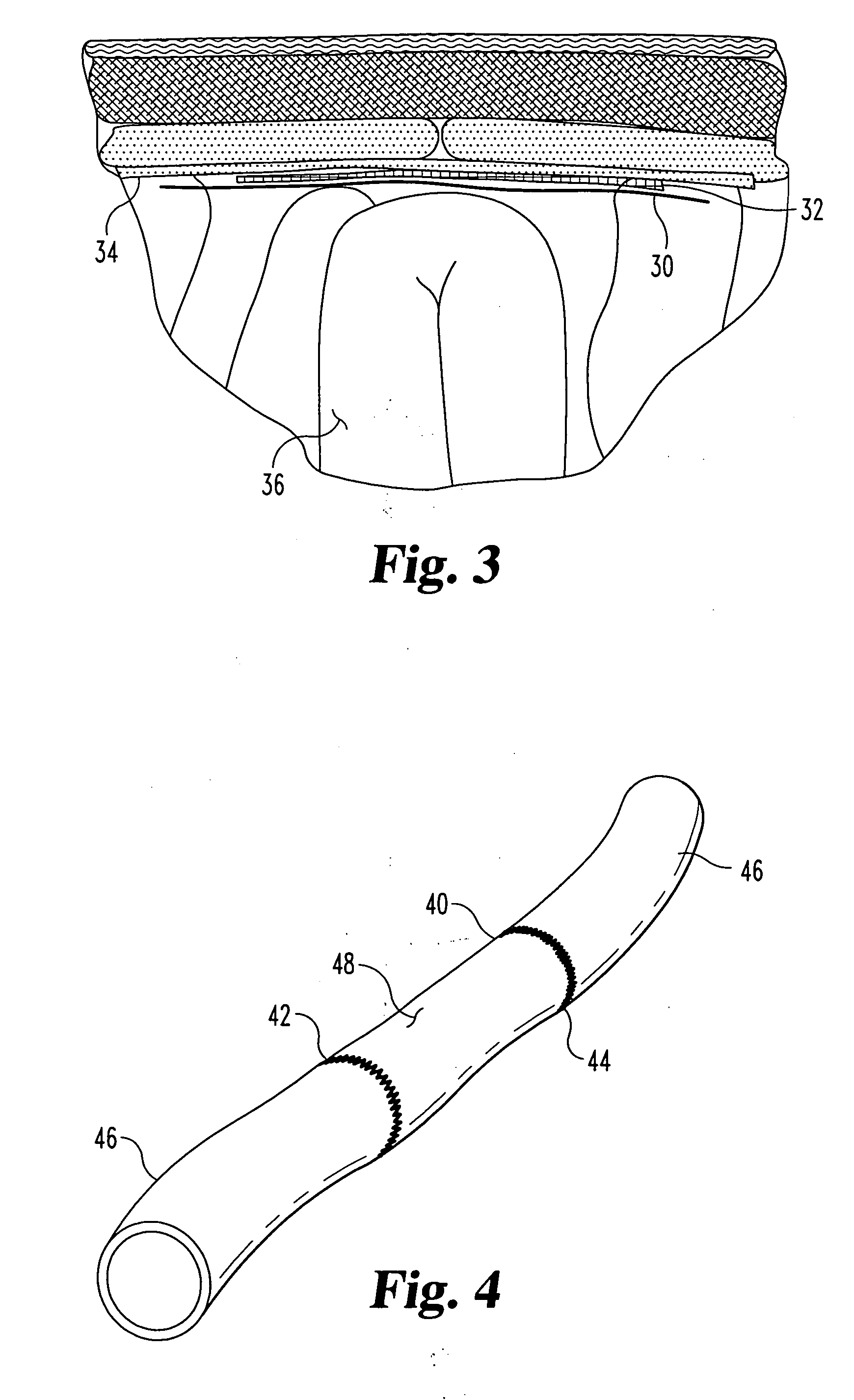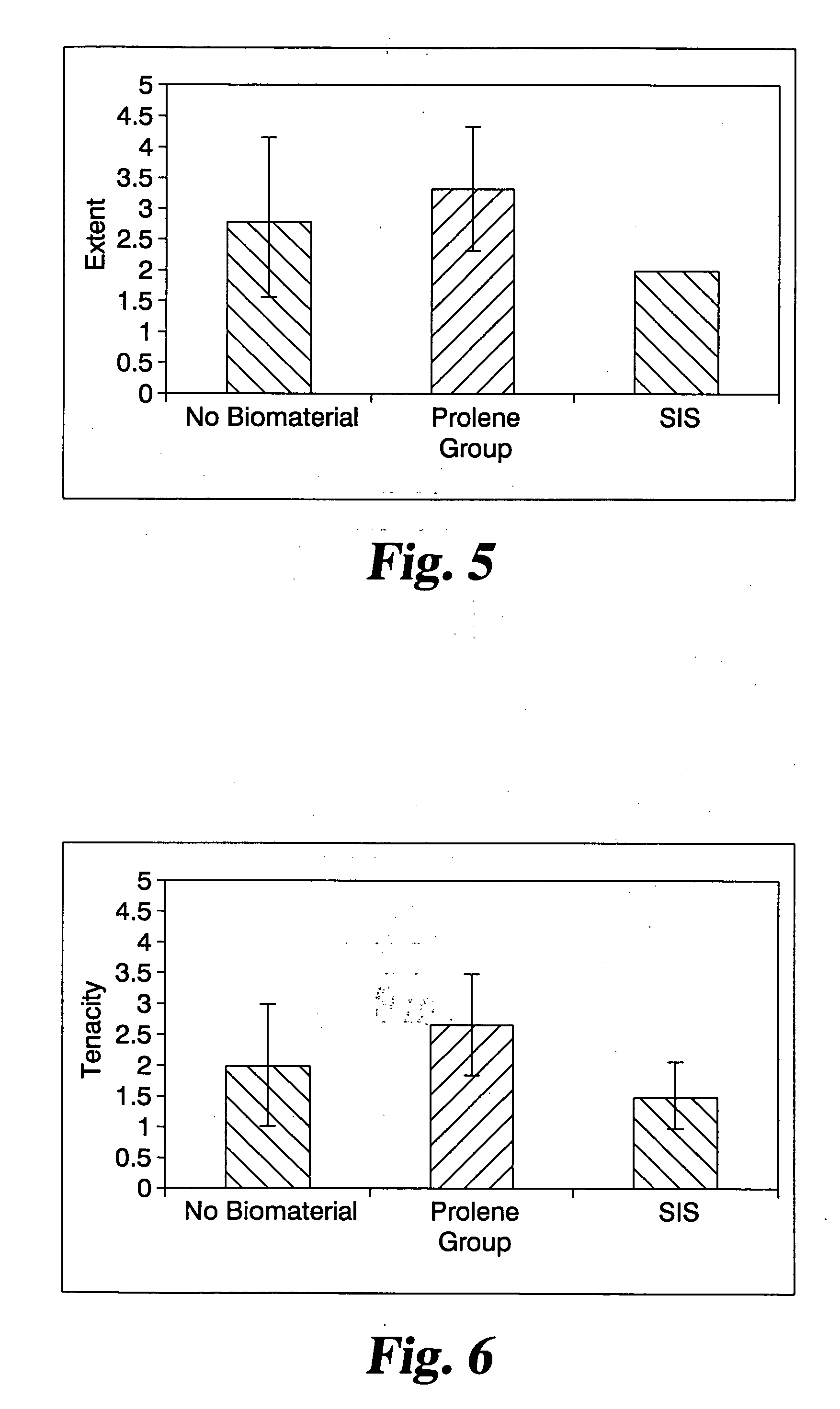Implantable materials and methods for inhibiting tissue adhesion formation
- Summary
- Abstract
- Description
- Claims
- Application Information
AI Technical Summary
Benefits of technology
Problems solved by technology
Method used
Image
Examples
example 1
Animal Model Testing
[0063] This Example describes an animal model used to test the effects of NSAID addition to materials on the formation of tissue adhesions.
Methods
[0064] Twenty-nine 250-300 gram Sprague-Dawley rats were anesthetized with an intramuscular (IM) dose of ketamine hydrochloride (90 mg / kg) and xylazine (10 mg / kg) and prepared for aseptic abdominal surgery. Using established techniques (see T. Guvenal et al., 2002 Human Repro 16(8): 1732-51), the cecum was exteriorized, abraded with a nylon brush, and placed back into the abdominal cavity. Additionally, the peritoneal cavity was mildly scraped with a #15 scalpel blade in order to increase the incidence and / or severity of adhesions.
[0065] Groups of rats received one of the following 4 treatments: [0066] Treatment 1: (Sham) The cecum was exteriorized, but not abraded. No biomaterials were implanted. N=3 rats. [0067] Treatment 2: (Control) No biomaterial implanted. N=8 rats. [0068] Treatment 3: a lyophilized 2-layer p...
example 2
Nimesulide-Impregnated
ECM Construct Inhibits Adhesion Formation
[0089] In this Example, the animal model described in Example 1 was used to test whether the addition of a NSAID compound to an SIS construct could be used to reduce post-surgical adhesion formation.
Materials and Methods
[0090] Forty-five strips of lyophilized 2-layer SIS measuring approximately 6 cm×2 cm were prepared from a single lot of standard strength SIS. The samples were randomly subdivided into 3 groups: “SIS” (mean SIS mass 79.6±7 mg), “High Dose Nimesulide” (74.9±10 mg), and “Low Dose Nimesulide” (75.2±11 mg). The “SIS” samples (without further treatment) were sterilized with ethylene oxide. The “High Dose” and “Low Dose” SIS constructs were soaked for 1 hour in 800 μM or 200 μM solutions of nimesulide (Sigma N1016, Lot 012K1278) in DMSO (100%, Sigma D5879, Batch 083K0136) respectively, at room temperature with moderate agitation. The samples were then removed from solution, frozen at −80° C. overnight, re...
example 3
Testing with Additional Biomaterials
Materials
[0111] Twenty-seven strips of lyophilized 2-layer SIS measuring approximately 6 cm×2 cm were prepared from a single lot of standard strength SIS. This was the same material used in prior Examples. The samples were randomly subdivided into 2 groups: “SIS” (N=10, mean 80.4±15 mg) and “SIS+nimesulide” (N=17, mean 70.4±8 mg). The “SIS” samples (without further treatment) were sterilized with ethylene oxide. The “SIS+nimesulide” samples were soaked for 1 hour in an 800 μM solution of nimesulide (Sigma N1016, Lot 013K0925) in DMSO (Sigma D5879, Batch 083K0136, 30 mL & Sigma D1435, Batch 109H0036, 380 mL), at room temperature with moderate agitation. The samples were then removed from solution, frozen at −80° C. overnight, relyophilized, and sterilized with ethylene oxide. This treatment corresponds to the “SIS+high dose nimesulide” group in Example 2 above.
[0112] Preliminary elution studies using mass spectroscopy to quantify the loading of...
PUM
| Property | Measurement | Unit |
|---|---|---|
| Mesh size | aaaaa | aaaaa |
| Mesh size | aaaaa | aaaaa |
| Mesh size | aaaaa | aaaaa |
Abstract
Description
Claims
Application Information
 Login to View More
Login to View More - R&D
- Intellectual Property
- Life Sciences
- Materials
- Tech Scout
- Unparalleled Data Quality
- Higher Quality Content
- 60% Fewer Hallucinations
Browse by: Latest US Patents, China's latest patents, Technical Efficacy Thesaurus, Application Domain, Technology Topic, Popular Technical Reports.
© 2025 PatSnap. All rights reserved.Legal|Privacy policy|Modern Slavery Act Transparency Statement|Sitemap|About US| Contact US: help@patsnap.com



